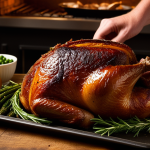Roots of Well-Known UK Pet Breeds
Understanding the historical origins of UK pet breeds requires exploring both the environmental and cultural backdrop of the British Isles. The history of British dog breeds often begins with working demands—early settlers and rural communities bred dogs for specific tasks like hunting, herding, or guarding. For example, sheepdogs emerged in regions with extensive pastoral farming, adapting traits suited for herding. Similarly, British cat breeds have mixed origins influenced by trade and migration. The history of British cat breeds reflects introductions of felines via seafaring routes and their adaptation to local climates and urban settings.
Breed development was shaped by multiple factors: geographical isolation, climate, and human activity all played vital roles. Breed popularity often surged based on a breed’s functional value or social status association. For instance, some dogs gained prominence due to aristocratic patronage or rural utility, while cats gained popularity as both pest controllers and pets.
Topic to read : How Can You Ensure Your Pet Feels Safe and Happy When Traveling in the UK?
In summary, the historical origins of UK pet breeds are deeply entwined with occupational needs and cultural exchanges. This foundation explains how diverse breeds arrived, adapted, and eventually became fixtures within British households.
Development and Functions of Iconic UK Dog Breeds
The UK dog breeds history is deeply rooted in the practical demands of British life. Iconic dogs like the Labrador Retriever were originally bred for retrieving game during hunting—hence their keen nose and soft mouth. The Border Collie stands out in the British dog breed origins for its extraordinary herding abilities, shaped by generations of shepherds in northern England and southern Scotland. Bulldogs, with their sturdy build and tenacious character, were developed primarily for bull-baiting, a now-outlawed sport, highlighting a distinct working dog focus in UK breed creation.
This might interest you : What are the best ways to train a rescue pet in the UK?
These breeds fulfilled clear roles: hunting, herding, guarding, and companionship shaped their traits. Over time, as rural economies evolved and urbanisation increased, many working dogs UK transitioned toward more companion-oriented roles. Formal breed recognition by kennel clubs in the 19th and 20th centuries played a key role in standardising breed characteristics, ensuring consistent qualities, and increasing their popularity.
Understanding the UK dog breeds history in this context illustrates how function and environment propelled genetic and behavioural refinement, creating dogs uniquely suited to the UK’s diverse landscapes and social needs.
Historical Background of Popular UK Cat Breeds
Early UK cat breeds origin traces back to domestic cats arriving via trade routes and seafarers, adapting to British environments over centuries. The British Shorthair history is a prime example—its sturdy, dense coat evolved to withstand the variable UK climate, while its calm temperament suited urban and rural settings alike. Similarly, the Scottish Fold’s distinctive folded ears mark a genetic mutation first noted in Scotland, quickly gaining appeal for its unique appearance and affectionate nature.
Cats initially served practical functions such as pest control on farms and ships, which helped shape their historical origins of UK pet breeds. Over time, as societies urbanised and lifestyles shifted, cats increasingly became cherished companions rather than just working animals. This evolution influenced the recognition and breeding of specific UK cat breeds whose distinct traits met new expectations for indoor pets.
Changing cultural attitudes heavily impacted breed popularity. For instance, the British Shorthair became a symbol of British pet culture partly through its frequent depiction in media and exhibitions. Its enduring presence in UK households today reflects both careful breeding and the historical melding of utility with companionship desires—central to understanding the broader history of British cat breeds.
Roots of Well-Known UK Pet Breeds
The historical origins of UK pet breeds reflect a blend of environmental adaptation, human necessity, and cultural influences spanning centuries. Many UK breeds arrived through migration, trade, or purposeful introduction. For example, small working dogs thrived in rural settings, bred to assist in specific tasks like herding or pest control. Cats, often brought via seafaring traders, adapted to both urban and rural habitats, contributing to the evolving history of British cat breeds.
Geography and climate significantly influenced these breeds’ development. Isolated regions encouraged distinct traits, leading to varieties like the Scottish Fold or Border Collie, each shaped by local demands. The history of British dog breeds shows a strong link to occupational roles such as guarding estates or retrieving game, while cats evolved from practical pest controllers to valued companions.
Breed popularity was driven by several factors: functional utility, regional tradition, and social status. Some breeds gained recognition through working excellence, others through aristocratic endorsement or inclusion in public exhibitions. Overall, the historical origins of UK pet breeds highlight how practical needs and cultural shifts jointly forged the distinctive British pet lineage seen today.
Roots of Well-Known UK Pet Breeds
The historical origins of UK pet breeds reveal a tapestry woven from migration, adaptation, and human needs. Dogs and cats arrived through various routes—traders, settlers, and working communities all contributed to their development. In the history of British dog breeds, geographic isolation fostered distinct traits; for example, rugged terrains shaped the Border Collie’s stamina and intelligence. Similarly, the history of British cat breeds shows how cats introduced via seafaring routes adapted traits like dense coats and temperament to thrive in the UK’s climate.
Breeds often originated from purposeful breeding to serve specific functions, but the environment played an equally critical role. Harsh weather and varying landscapes encouraged evolution of robust physical and behavioural traits, directly influencing breeds’ suitability for tasks like herding, guarding, or controlling pests.
Popularity of certain breeds also depended on social and cultural dynamics. Some dogs and cats gained recognition because of their working excellence, while others became popular through aristocratic patronage or public exhibitions, reflecting evolving attitudes toward pets.
Understanding these complex factors enriches our appreciation of the historical origins of UK pet breeds, highlighting how necessity and culture merged to form the unique British pet heritage.



